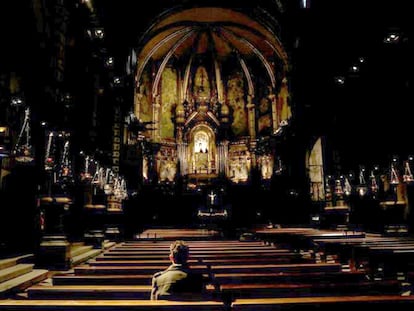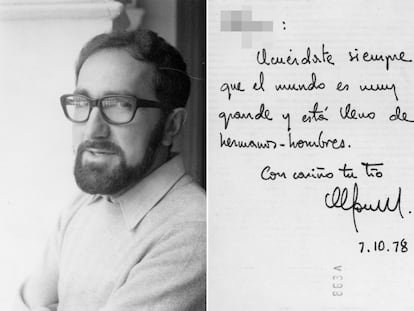The Spanish priests accused of child abuse in the United States who fell off the radar
Several Catholic dioceses and American newspapers have revealed cases that, until recently, were unknown to the public. EL PAÍS has discovered that, after committing their crimes in the U.S., the accused clergymen headed for Spain… and managed to disappear
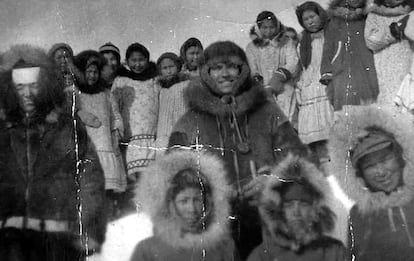
In 2018, EL PAÍS launched an investigation into pedophilia in the Spanish Church. We maintain an updated database with all known cases. If you know of a case that has not been reported, you can write to us at: abusos@elpais.es. If your information is regarding a case in Latin America, the address is: abusosamerica@elpais.es.
─────────
Manuel Fernández is a Spanish priest who was ordained in 1959, ending up in New Jersey by 1979. But in 2002, he was accused of child abuse — which occurred in the 1980s — and was removed from his post.
However, Fernández then returned to his diocese in the city of Ourense, in northwestern Spain. From there, he continued to be a priest, living quietly, without anyone in the community knowing about his past. The bishop’s office didn’t take any special measures, claiming that there was no record about his background on the other side of the ocean.
Up until now, this case was totally unknown in Spain. But it’s not the only one to have recently come to light. There have been several cases of Spanish priests who have been accused of pedophilia in the United States, with no public disclosure. EL PAÍS first discovered a case like this in 2018, concerning Francisco Carreras. In 1984, he was sent to Salamanca from Miami with a warning about how dangerous he was. Yet, over the course of three decades, he was able to commit dozens of abuses across the Spanish province, moving from town to town.
In some cases, these clerics returned to Spain on the run and managed to evade detection. This newspaper has identified a total of 15 Spanish priests with clear accusations or convictions, along with another five defendants (who have not been included in this article) whose investigations have been inconclusive.
The information has been collected from data disseminated by U.S. media and from the Catholic Church itself.
Similarly, there are clerics from the United States and other countries — all accused of abuse in the U.S. — who, at some point, have ended up on Spanish soil. EL PAÍS has recorded six such cases, adding pieces to the puzzle concerning the Catholic Church in Spain, which has barely collaborated with investigators to help make the truth about these abusers known.
The recent case of Bolivia — where, in the past few weeks, six Spanish Jesuit priest have been accused of abuse — was the result of information uncovered by EL PAÍS, after this newspaper gained access to the diary of a deceased pedophile priest, Alfonso Pedrajas. The perpetrator’s notes indicate that, oftentimes, a priest’s transfer to another country was precisely because of accusations of abuse in Spain.
However, in several cases in the United States, this phenomenon has also occurred in reverse, with priests escaping to Spain after being accused, arriving in the Mediterranean country with a clean file. In theory, the Catholic dioceses of departure should inform the destination dioceses of what has taken place. But it’s also unclear if the Church didn’t know about the accusations in the United States against clergy, or if the Church knew and opted to do nothing. In any case, in Spain, the trail of several priests has gone cold, as it’s been impossible to determine their dioceses of origin to ask for explanations. Of course, the Spanish Catholic Church certainly has this information, and could release it if it wanted to.
The oldest case involves the Jesuit priest Segundo Llorente. Born in 1906 in a town in the Spanish province of León, he was posted to an indigenous community in Alaska. He even became a local politician in the state legislature. And, despite all the crimes he committed, his image in Spain remains impeccable. Among the Jesuits, he is a legendary figure — his Wikipedia entry lists all his achievements, without a single mention of the abuse allegations.
There are many more cases from decades ago of priests who left Spain from the United States as young missionaries. Many lived the rest of their lives in North America, but others chose to return to Spain as a means of escape. In several of these cases, the mystery continues, given the silence of the dioceses. The priest Jesús García, for example, was accused of abuse in 1995, in Texas. He subsequently returned to Spain, where he landed in the Diocese of Alcalá de Henares, in Madrid, only to be placed in different parishes. The bishop’s office has refused to provide details about the case, only responding to EL PAÍS saying that it has informed the Ombudsman and the Spanish Episcopal Conference about the accusations.
A case that illustrates the other phenomenon — of non-Spanish priests accused in the United States subsequently ending up in Spain — is that of the Peruvian priest Edgardo Arrunategui Jiménez. After being accused in California, he left the U.S., covered his tracks and managed to settle in parishes in Madrid between 2004 and 2008, sometimes changing his name. The Roman Catholic Archdiocese of Madrid now confirms that he was indeed in the area, but claims that he arrived from Peru — his original diocese — without any negative reports, while affirming that there are no complaints against him in Spain. His whereabouts are currently unknown.
All these cases — along with many others — were concealed from the public, lost among the thousands of accusations that have emerged since 2002, when The Boston Globe exposed the sex abuse scandal within the Archdiocese of Boston. Since then, numerous media outlets and victims’ organizations have published enormous amounts of information about hidden cases. In recent years, databases have been set up, such as BishopAccountability.org’s, which includes profiles of every U.S. bishop, priest, nun, brother and seminarian accused of child sexual abuse.
In Spain, this work has been carried out by EL PAÍS since 2018, given the Catholic Church’s refusal to reveal what it knows and make the information public. The database maintained by this newspaper — opened in April 2021, the only one in existence in Spain — brings together all the cases that have come to light, through the media and court rulings, as well as those that have been directly admitted to by the Church. Currently, the database counts 959 accused persons, who abused a total of at least 1,922 victims. When this newspaper began its work, only 34 cases were known.
A year ago, the Ombudsman — commissioned by Spain’s Congress of Deputies — began an investigation into pedophilia within the Catholic Chuch of Spain. However, this report will still take time — there is no deadline. Similarly, the Spanish Episcopal Conference entrusted an internal investigation to a law firm — led by a member of Opus Dei — which presented its report in October. Although the Episcopal Conference assures the public that the Spanish dioceses have provided all the information they have, it remains to be seen if their degree of transparency will be up to the standard of the United States.
In the U.S. — unlike Spain — the Catholic Church already undertook a major transparency operation in 2004 that led to an avalanche of data. The U.S. Conference of Catholic Bishops ordered an investigation led by a council of laypeople, which commissioned a statistical study from the John Jay College of Criminal Justice at the the City University of New York. The data — from the 1950-2002 period — was provided by the dioceses themselves. The Conference also made the files public — the dioceses had to disseminate lists with names and surnames. The end result was that 4,392 U.S.-based priests had been charged in the past, 4% of the clergy. They had abused a total of at least 10,667 victims. Only 5% of these abuse cases had been taken to court.
This was only the beginning. Journalistic investigations and complaints continued to bring names to light, making it possible to cross-reference data and follow the trail of priests accused of child abuse who changed locations upon being discovered. Among them, there were also Spaniards, as well as non-Spanish accused priests who took off for Spain.
Listed below are 21 of the clergymen who are accused or convicted, according to U.S. records: 15 Spaniards and six foreigners, all of whom passed through Spain at some point. Information has been requested from all the North American dioceses involved. So far, very few have responded.

Julián Sanz
Born in 1949, Julián Sanz was ordained in 1977. Three years later, he arrived in the Diocese of Tucson, Arizona. In 2002, a man accused Sanz of sexually abusing him. After that lawsuit, about a year later, he was accused of having abused another minor, back in 1982.
Sanz was finally arrested in 2003. He admitted to the accusations and was sentenced to five years in prison. In 2010, he was removed from the priesthood. He appears on the Diocese of Tucson’s 2019 list of priests who have been credibly accused of abuse.
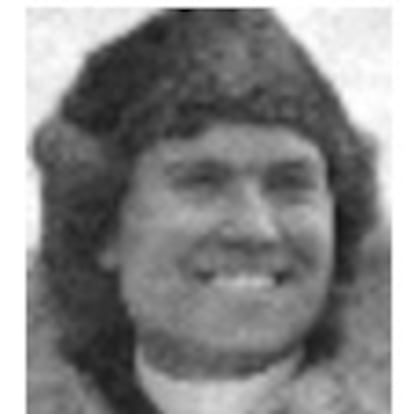
Segundo Llorente
Llorente was a Spanish Jesuit priest, philosopher and writer. At the age of 13, he entered the seminary in León, Spain. He arrived in Alaska in 1935, where he spent four decades ministering in remote towns across the territory, while learning indigenous languages. He even was elected as a representative to the state legislature — becoming the first Catholic priest to be part of a North American legislature — and is considered to be a co-founder of the state of Alaska, which was admitted as the 49th state in 1959.
Llorente passed away in 1989 and was buried on an Indian burial ground in De Smet, Idaho, where typically only Native American Indians can be buried upon their request. He was also named favorite son of his hometown of León. However, his image began to darken in 2004, when he was accused of acts of sexual abuse that took place between 1956 and 1957. According to the allegations, Llorente invited a six or seven-year-old boy to his house on more than four occasions, after catechism class. In 2005, another victim accused the priest. Both victims received financial compensation from the Catholic Church, although two claims are still pending. Llorente is included in a list of Jesuit priests with credible accusations, published by Jesuits West Province in 2018.

José Mena
Born in 1929, Mena was ordained in 1961. It is unknown if this took place in Spain or in the United States. In 1965, while ministering in Florida, he was accused of repeatedly sexually abusing a child. The lawsuit was filed in 2005 and the Diocese of St. Augustine settled with the victim for a sum of $150,000. In 2008, another lawsuit was filed against him. According to the Survivors Network of those Abused by Priests (SNAP), “Mena repeatedly fondled, sodomized and forced the boy to perform oral sex” during the 1970s. In 2009, yet another victim sued him.
After the first accusations in 2005, Meta was removed from his post. He subsequently returned to Spain, although it is unknown where he was subsequently assigned, whether any measures were taken against him, or if he was allowed to maintain contact with minors.

John Peris
Although he is listed as “John” in U.S. records, his given name is actually Juan, sometimes, though, he’s listed as Vicente. He was ordained in 1934, either in Spain or the United States.
He was a parish priest in the city of Anton Chico, New Mexico. He also served as a missionary in small towns across the state. In 1995, a 51-year-old man accused Peris of having sexually abused him for several months when he was a child, back in 1957. According to reports by local media, the plaintiff was 13-years-old at the time — he lived in the Anton Chico parish, so as to be able to catch the school bus, which passed far away from his hometown. Peris returned to an unknown district in Spain after the complaint — by now, he would have passed away. He appears on a list of accused priests, published by the Archdiocese of Santa Fe.
Andrew Roy is actually a Spaniard: Andrés Rodríguez. In 2003, a resident of Richmond, Virginia filed a lawsuit against the state diocese for $5 million, which was ultimately dismissed. He claimed that those responsible knew that Roy — a priest in the city of Hopewell — had abused him between 1962 and 1966 and did nothing about it. At the time, the victim was a 10-year-old altar boy. The plaintiff claimed that the church sexual abuse scandal that erupted in Boston in 2002 brought back memories of the abuse he faced at the hands of Rodríguez, which took place both in the parish and in the city’s elementary school.
Available data for Rodríguez indicates that he was ordained in 1936, in Los Angeles. He arrived in Virginia in 1956 and continued to minister until his retirement in 1981. In 2004, after being accused, he was already living in Spain, but his exact place of residence remained unknown. By the time he was accused, Rodríguez was 92-years-old and suffering from Alzheimer’s, according to the Diocese of Richmond, Virginia.

Gabriel Salinas
Salinas was born in Spain in 1892 and ordained in 1909. He was the first Augustinian to go to the United States. For most of his 55 years of priesthood, he was a member of the Order of Augustinian Recollects in the U.S. He spent three decades in Omaha, Nebraska.
In 1957, Salinas was transferred to Atwater, California, where he was accused of sexually abusing a minor between 1958 and 1960, as revealed in a 2004 report by the Archdiocese of Los Angeles. The report explained that he was once removed from office and reassigned to a rural parish for three years. SNAP asked the archbishop to release the information about Salinas to Nebraskan Catholics: “This predator spent more than 30 years in Nebraska, so it’s silly to think that he assaulted children in California, but never in Omaha.” Salinas died in 1972, after being hit by a car in Los Angeles. He appears on a list of priests accused of abuse, released by the Archdiocese of Los Angeles.
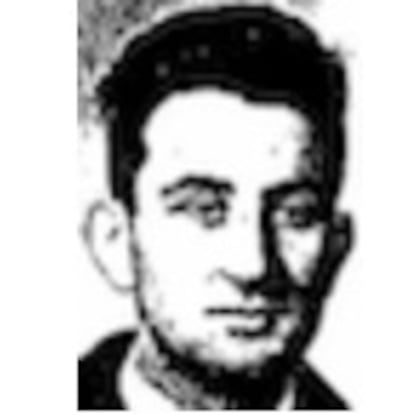
José I. Ugarte
Born in Delika, Spain, in 1941, Ugarte was ordained in the Archdiocese of Los Angeles in 1971. He is accused of drugging and raping a child in a hotel in Ensenada, California, in the late-1970s and of sexually abusing a 17-year-old boy in 1983. These crimes came to light in 2013, when the archbishop’s archives were opened and hidden documentation surfaced. In the first case, the child ended up in shock. The priest said he was too drugged to remember what happened — the authorities took no further action. One of the later victims recounted that they suffered abuse on 15 occasions and, after each one of the assaults, Ugarte absolved the victim of their sins.
The Archdiocese of Los Angeles carried out an investigation and, in 1995, Archbishop Mahony ordered Ugarte to return to Spain, to the Diocese of Vitoria, under the supervision of the local bishop. Ugarte — prohibited from officiating public masses — was ordered to establish his residence there and look for a regular job. He was also prohibited from returning to the United States for a period of seven years without the express consent of the Church.
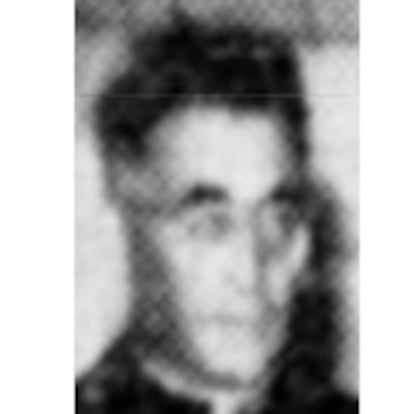
Emilio Roure
Rourre was ordained in Barcelona, in 1920. The Official Catholic Directory indicates that he may have arrived in the United States in 1931. He first worked in Los Angeles, then in Tucson, Arizona and Gallup, New Mexico. In 1945, he was placed in charge of several parishes under the Diocese of El Paso, Texas. In 1965, during a trip to Barcelona to visit his brother, he died. Since 2019, he has been publicly listed as an abuser who committed acts of pedophilia while ministering under the jurisdiction of the dioceses of El Paso and Las Cruces.

Jesús García
Born in Burgos, Spain, in 1957, García studied at the city’s seminary until his penultimate year, when he moved to the United States, as confirmed by the Archdiocese of Burgos, which also notes that it has never heard from this priest again.
According to information from the Catholic Church in the United States, García was ordained in Burgos in 1984. From 1983, he began ministering under the jurisdiction of the Diocese of Corpus Christi, Texas. There, he was accused of drugging and raping four children and a man between 1991 and 1994. Around that time, he went to Spain — his name appears in the records of the Diocese of Alcalá de Henares. However, in 1996, he voluntarily returned to Texas and was arrested. When his trial ended in 1997, the charges were dismissed, but in 2019, the Diocese of Corpus Christi included him on its public list of priests who had been credibly accused of committing sexual abuse. The institution notes that he was transferred in 2000 and defrocked in 2011.
Garcia sued for being included on the registry of abusers. However, upon being consulted by EL PAÍS, the Diocese of Corpus Christi reaffirms the information it made public back in 2019. However, the bishop’s office has not clarified whether or not it informed the Diocese of Alcalá de Henares or the Spanish Church about the accusations lodged against García in the United States.
After the trial, García returned to Spain permanently, to the Diocese of Alcalá de Henares in Madrid. EL PAÍS has asked the leadership of the diocese whether they received any information regarding the accusations against this priest in the United States — if any measures have been taken against him, if he is allowed to continue ministering, if he is allowed to have contact with minors and if he has ever been the subject of any criminal complaints in Spain. The Diocese of Alcalá de Henares has only answered in writing, indicating that “the Ombudsman and the EEC have already been informed about this case.” The current whereabouts of García have not been disclosed.
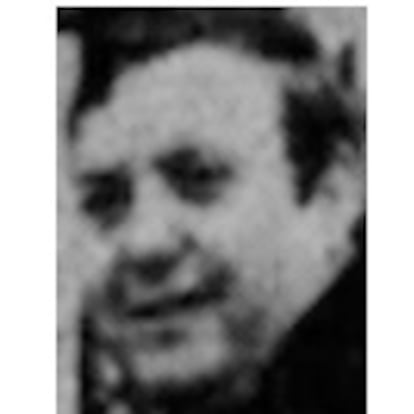
Manuel Fernández
Born in 1935, Fernández was ordained in 1959, in the Diocese of Ourense. In official records, he appears again in 1979, in New Jersey. He passed through several parishes in the Diocese of Trenton — in 2019, he was included in their public list of priests who had been accused of multiple cases of abuse. His case first came to light in 2002, after a woman accused him of events that transpired in 1982. He was subsequently removed from his post, but then returned to Ourense and continued to be a priest.
Upon being contacted by EL PAÍS, the Diocese of Ourense claims that, when he arrived, “there was no record about any [accusations] or any open [legal processes] in the United States.” In any case, the institution points out that he was already retired when he was living in Spain and that there were never any complaints against him in Ourense.
Back in 2005, an American newspaper located the priest in Galicia and spoke with him. Fernández told the reporters that he returned to Spain to live out his retirement and denied having been accused in Trenton, New Jersey. Luis Quinteiro — the then-bishop of Ourense — “refused to answer written questions about Monsignor Fernández,” according to the newspaper. He replied to the journalist: “I don’t know what right you have to send me these questions.” Fernández died in 2006, at the age of 71.
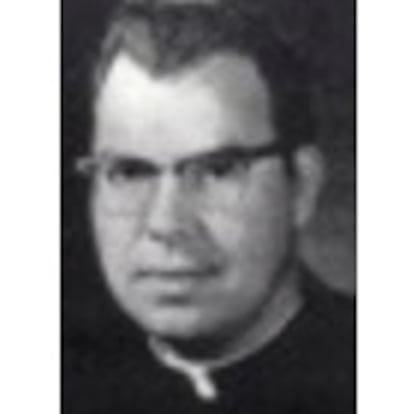
Emilio García
Emilio García — ordained as a priest in 1957 — was accused of raping a minor during the 1960s in Florida, in the Diocese of Orlando. The victim began to have recurring memories of what happened in 2002, after the abuse in the Boston Church was exposed. According to what she told local media, García began abusing her when she was 14-years-old. Two weeks after her 16th birthday, Garcia invited her to his office to pick up a birthday present and raped her. Garcia admitted to the accusations. He was dismissed from his position and returned to Spain, although the exact destination has never been revealed. He passed away in 2020, according to the Florida Office of the Attorney General.
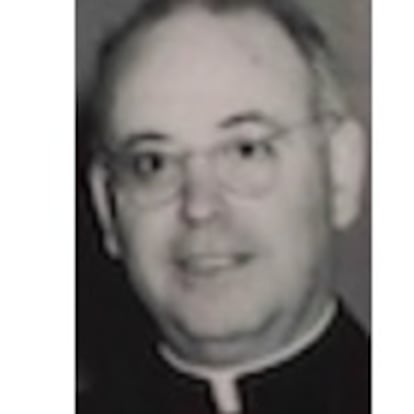
Joseph Rossell
This Catalan priest — born in Bagà in 1907 — was ordained in 1930. He arrived in the United States in 1947. For the first three years of his stay, he was frequently transferred between parishes and states. Over the course of his years as a priest, he was sued several times for sexually abusing children. As recently as 2010, he was accused of having abused two girls in catechism class.
All the information about Rossell’s acts of sexual abuse only came to light in 2007, when the Diocese of San Diego made his file public. By then, he had been dead for a long time, since 1982. He had returned to Spain 10 years before he died. Since 2007, he has been on the Diocese of San Diego’s list of priests facing credible allegations of abuse.

Gregory Sierra Sheridan
Sierra was born in Zaragoza, Spain, in 1911. He was ordained as a priest with the Order of Augustinian Recollects in 1935, the year in which he began his role as an associate pastor in the state of Kansas. He passed through several states before settling in California, where he was accused for the first time by a woman, who claimed that Sierra had abused her in 1969, when she was eight-years-old. In 2019, three other women accused him of acts of sexual abuse that he inflicted on them in the 1960s. And, in 2020, five men and women filed another lawsuit.
One of the male victims claimed that Sierra had raped him when he was around 12-years-old. Yet, Sierra returned to Spain in 1983 with a letter of recommendation. He died in 1991, in Zaragoza. He is on a list of credibly accused members of the Diocese of San Diego. This list was published in 2007 as part of the religious institution’s bankruptcy proceedings, after payments were made to the victims who sued.

Carmelo García
A member of the Franciscan order, Carmelo García was sent to Santa Barbara, California. He committed abuses between 1988 and 1991, according to a list of credibly accused clergymen, published by the local congregation in 2019. The document indicates that he left the order in 1989 and returned to Spain, but afterwards, there is hardly any information about him. The Franciscan order admits that it learned of his abuses back in 1998, although the information was only made public in 2019.
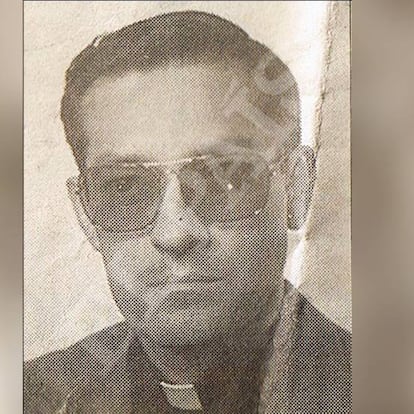
Francisco Carreras
The case of Francisco Carreras was the first of the Spanish priests accused in the United States and relocated to Spain that EL PAÍS discovered. The story was published between 2018 and 2019, at the beginning of the investigation into abuses within the Catholic Church of Spain. Carreras — ordained in Salamanca in 1973 — moved to Miami in 1975, where he was accused of sexual abuse. The Archdiocese of Miami sent him back to Spain to his original diocese — that of Salamanca — and warned the Spaniards about the accusations made against him, as confirmed by this newspaper. Carreras was nevertheless assigned to towns across the province of Salamanca between 1981 and 2004, under the mandate of three different bishops. He was accused of abusing dozens of minors. The Diocese of Salamanca has never given an explanation. Carreras lived in a hermitage and died during the pandemic.
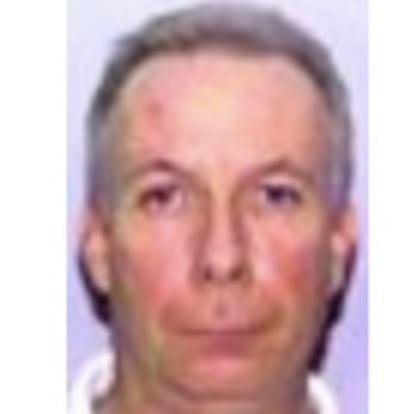
Jeremiah Michael Spillane
Spillane — an American citizen and a member of the Legionaries of Christ — was studying in schools run by the religious order in Spain during the late-1980s and 1990s, according to U.S. media reports. Born in 1954, he was ordained in 1986, in the Diocese of Venice, Florida. He worked in different countries as a teacher and director of Catholic schools. In 1997, he was sentenced to two years of house arrest and two years of probation for trying to flirt with a minor over the internet, who turned out to be an undercover police officer.
Spillane confessed, also admitting to previous abuses in Mexico. Spillane was removed by the Diocese of Venice in 1998. The judgment in the case explains that Spillane had rented a room where he planned to take the child with the intention of raping them. He is on a list of members of the Legionaries of Christ with proven accusations of sexual abuse.
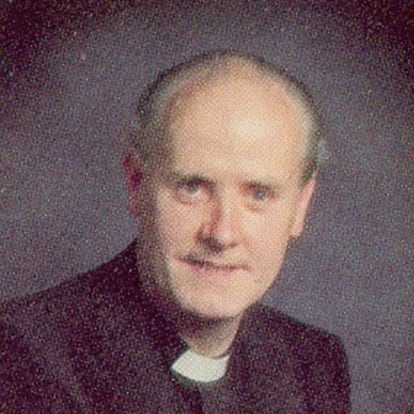
George A. Costigan
In 1993, this American priest — also known as “Brother Daniel Eliseo” — was accused of abusing a girl in the 1960s in the Diocese of Paterson, New Jersey. He was subsequently removed as a priest and sent to a convent. However, he was then relocated to Spain and ended up in a monastery in the village of Puentenansa, in the north, where he lived between 2002 and 2004. Apparently, he chose this place because he claimed that, back in 1991, it was where he had experienced a miraculous cure from cancer.
Despite being removed and being prohibited from dressing as a priest and ministering, he then moved around various places in the United States, posing as a priest. In 2019, he was included in a list of clergy accused of pedophilia, drawn up by the Diocese of Paterson.
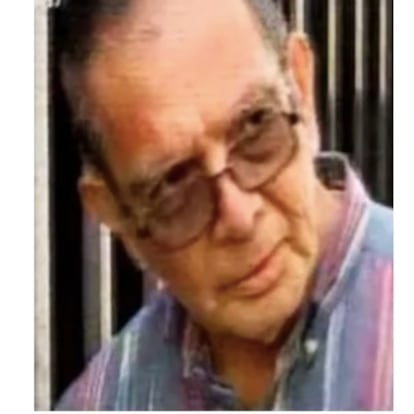
Edgardo Arrunategui Jiménez
This Peruvian priest served in the Diocese of Orange, California, from 1987 until 1990. The diocese explained that the reason for his sudden departure was that he had gone back to Peru as a missionary. However, he later returned to the Diocese of Fresno, California, between 1997 and 2004. It was then, in 2004 — after the U.S. Conference of Catholic Bishops ordered all dioceses to make hidden abuse cases public — that the Diocese of Orange revealed that Arrunategui had actually been fired in 1990, based on accusations of sexual abuse. After all of this was revealed, he fled the country.
However, in 2009, a local newspaper found out that the priest had passed through Madrid, where he spent at least five years in different parishes, sometimes changing his name. The OC Weekly asked the Archdiocese of Madrid for an explanation, but received no response. Arrunategui then returned to Peru, where he was tracked down by another journalist.
The Archdiocese of Madrid — upon being consulted by EL PAÍS — confirms that Arrunategui appears in its records as a student priest, who came to study theology at San Damaso Ecclesiastical University in the Spanish capital. According to the archbishop’s office, he came from the Peruvian Diocese of Chimbote, which did not communicate any history of abuse or any mention of his passage through the United States.
The Archdiocese of Madrid also notes that, as a student, Arrunategui was not assigned any pastoral duties. The religious authority claims that his stay was apparently limited from 2004 until 2006 and that no complaints were ever filed against him in the Spanish capital. The Diocese of Orange, meanwhile, tells EL PAÍS that the Peruvian was an external priest, refusing to give further details.

Michael J. Barrett
Michael J. Barrett was denounced in 2021, accused of abusing a minor between 1974 and 1978, when he was still a layperson within Opus Dei. Barrett was ordained in Rome in 1985 and later moved to Madrid, an Opus Dei spokesperson in Spain confirms. However, the organization is not able to specify where he stayed or how long he spent in the country, explaining that it’s common for new priests to spend an internship period in Spain before being sent off on assignment.
Barrett then moved to Houston, then to Los Angeles and, in 2016, to New York, where he was sued in 2021. Opus Dei does not know the result of that legal process. The Archdiocese of New York has not responded to EL PAÍS’s request for comment. In any case, Opus Dei claims that there are no complaints against Barrett for abuses in Spain.

Jorge Washington Córdova Hernández
This Ecuadorian priest was a preacher of the Catholic Charismatic Renewal movement. He even recorded religious songs. Formerly assigned to the Diocese of Tucson, Arizona, Córdova Hernández was accused of abusing 10 minors in 2005 in Yuma, Arizona and two more in Maricopa, Arizona, between 1988 and 1991. He had formed a kind of sect made up of young women and girls, called Virgins Consecrated — he had them dress up in blue and held initiation ceremonies, where he would cut locks from their hair. In 2019, he was included in the Diocese of Tucson’s list of credibly accused abusers.
Following the complaints, he fled the U.S. in 2005. After a two-year-long search, he was arrested in 2007, in Spain, at the age of 51. Spain’s National Police located him in Guadarrama, in the province of Madrid, when he was giving a seminar in the Fray Luis de Leon Cultural & Residential Complex, owned by the Augustinians. However, according to the American press, the extradition never ultimately took place. The Archdiocese of Madrid claims that he doesn’t appear in their records and that he was able to travel to Spain on his own, without the permission of his diocese of origin in Ecuador. Nothing is known about his subsequent activities, except that he registered himself as a freelancer in Torrejón de Ardoz, Madrid, in the freight transport business. He died in 2018.

Patrick O’Leary
O’Leary is a priest of Irish origin, although he was ordained in Oviedo, in northern Spain, according to data from U.S. media. He was removed from his parish in 1992, at the age of 33, because superiors deemed him to have “a pattern of inappropriate behavior” that made him a potential risk to children. According to media reports, he then returned to Oviedo. The Archdiocese of Oviedo explains that “this priest left [the principality of Asturias] in 1987, requested excardination [a transfer] from the diocese… [this transfer] was granted in 1989.” The religious institution assures EL PAÍS that it has no documents regarding his whereabouts post-1987 and that there are no complaints against him of any kind. His present location is still unknown.
Sign up for our weekly newsletter to get more English-language news coverage from EL PAÍS USA Edition
Tu suscripción se está usando en otro dispositivo
¿Quieres añadir otro usuario a tu suscripción?
Si continúas leyendo en este dispositivo, no se podrá leer en el otro.
FlechaTu suscripción se está usando en otro dispositivo y solo puedes acceder a EL PAÍS desde un dispositivo a la vez.
Si quieres compartir tu cuenta, cambia tu suscripción a la modalidad Premium, así podrás añadir otro usuario. Cada uno accederá con su propia cuenta de email, lo que os permitirá personalizar vuestra experiencia en EL PAÍS.
¿Tienes una suscripción de empresa? Accede aquí para contratar más cuentas.
En el caso de no saber quién está usando tu cuenta, te recomendamos cambiar tu contraseña aquí.
Si decides continuar compartiendo tu cuenta, este mensaje se mostrará en tu dispositivo y en el de la otra persona que está usando tu cuenta de forma indefinida, afectando a tu experiencia de lectura. Puedes consultar aquí los términos y condiciones de la suscripción digital.
More information
Archived In
Últimas noticias
Maduro pleads not guilty before the federal court in New York: ‘I am still the president of Venezuela’
A new test can detect Alzheimer’s from a finger prick
UN team enters Sudanese city of El Fasher after paramilitary massacre: ‘It’s like a ghost town’
A recipe for resistance: Indigenous peoples politicize their struggles from the kitchen
Most viewed
- Gilles Lipovetsky: ‘If you want to live better and fall in love, take Prozac, don’t look to philosophy’
- Alain Aspect, Nobel laureate in physics: ‘Einstein was so smart that he would have had to recognize quantum entanglement’
- Alvin Hellerstein, a 92-year-old judge appointed by Bill Clinton, to preside over Maduro’s trial in New York
- Why oil has been at the center of Venezuela-US conflicts for decades
- Maduro’s downfall puts China’s relationship with Venezuela to the test
